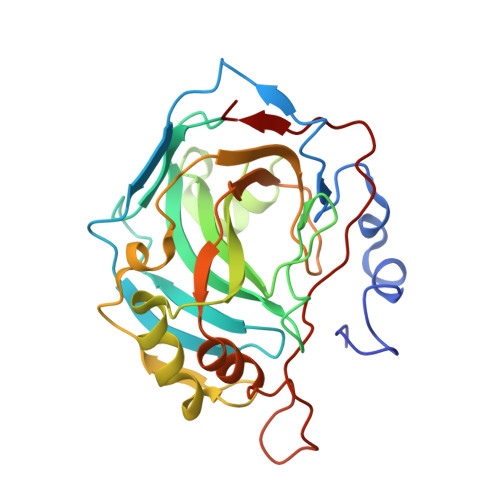Synchrotron Radiation Provides a Plausible Explanation for the Generation of a Free Radical Adduct of Thioxolone in Mutant Carbonic Anhydrase II.
Sippel, K.H., Genis, C., Govindasamy, L., Agbandje-McKenna, M., Kiddle, J.J., Tripp, B.C., McKenna, R.(2010) J Phys Chem Lett 1: 2898-2902
- PubMed: 20976122
- DOI: https://doi.org/10.1021/jz100954h
- Primary Citation of Related Structures:
4FIK - PubMed Abstract:
Thioxolone acts as a prodrug in the presence of carbonic anhydrase II (CA II), whereby the molecule is cleaved by thioester hydrolysis to the carbonic anhydrase inhibitor, 4-mercaptobenzene-1,3-diol (TH0). Thioxolone was soaked into the proton transfer mutant H64A of CA II in an effort to capture a reaction intermediate via X-ray crystallography. Structure determination of the 1.2 Å resolution data revealed the TH0 had been modified to a 4,4'-disulfanediyldibenzene-1,3-diol, a product of crystallization conditions, and a zinc ligated 2,4-dihydroxybenzenesulfenic acid, most likely induced by radiation damage. Neither ligand was likely a result of an enzymatic mechanism.
Organizational Affiliation:
Department of Biochemistry and Molecular Biology, P.O. Box 100245, College of Medicine, University of Florida, Gainesville, Florida 32610.




















